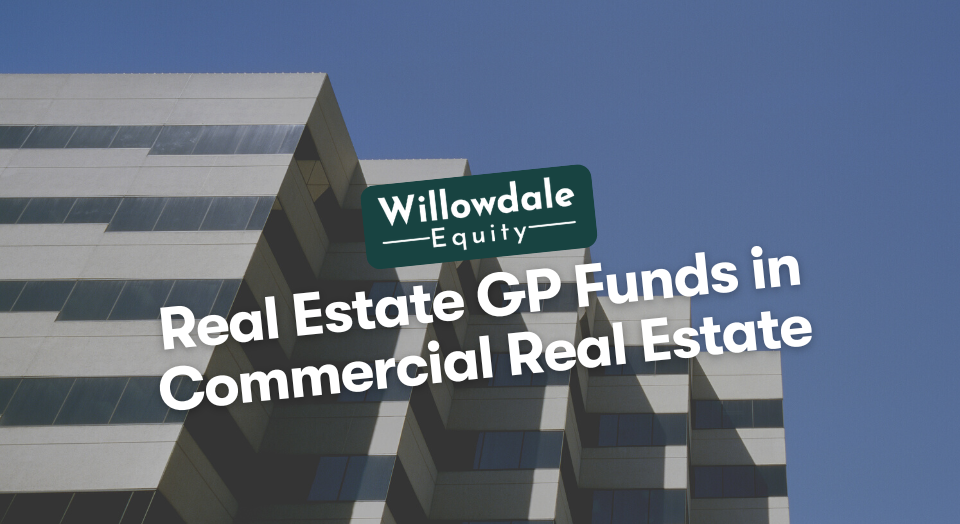
Exit Strategy For Real Estate: What Are the Exit Strategies For Multifamily Real Estate Investors?
This article is part of our passive investors guide on real estate syndications, available here.
Most multifamily investment deals in the real estate investing businesses are acquired via syndication, where real estate investors pool their money and resources together to buy more considerable assets. Apart from that, transaction volume comprises larger institutions, private equity firms, and family offices. Typically these firms like to hold multifamily properties for 5-7 years, sometimes 10-plus years.
This means that these properties are not being purchased by an individual who has deep pockets and doesn’t have a clear plan of exit from the property. As a real estate investor, even if you plan on holding the asset for 20-plus years or for life in some cases, you still need to understand the exit strategy for real estate to de-risk the deal and be prepared for whatever comes.
Key Takeaways
-
Before you purchase a multifamily property, you need to know the exit strategies. That requires understanding what type of asset you’re buying, what kind of partners you have invested with you on that particular real estate investment, your partner’s return expectations, and who your next buyer will be.
-
Remember, an exit doesn’t necessarily mean a hard sale of the property.
-
There are multiple exit strategies beyond the two main liquidity events where real estate investors can expect to receive full or part of their initial capital contribution back through pulling equity from the real estate investment.
Exit Strategy For Real Estate
There are several things to consider while developing an exit plan. There is no one-size-fits-all solution for every scenario. There isn’t a golden rule that applies to all options in specific circumstances, although there are common exit types that all investors must consider before entering a deal. Awareness of these unique variables will help you decide which real estate exit strategy to utilize. Understanding the various exit options might help decision-makers determine which one to pursue.
Buying real estate should not be any different than any entrepreneurship decision; you can’t make a significant investment or decision in an area without a plan B. It all boils down to your investing history and your local submarket’s real estate market situation. As a result, it’s critical to spend some time thinking about and evaluating your alternatives.
Many individuals overlook the need for learning about appropriate real estate exit strategies. A well-designed strategy minimizes the chance of failure with a high return and low risk. This article aims to deliver the data you need to make wise decisions about your available exit plan.
Real Estate Exit Strategy: Two main types of exits in multifamily real estate
Remember, an exit doesn’t necessarily mean a hard sale of the property. There are multiple exit strategies beyond the two main liquidity events where real estate investors can expect to receive full or part of their initial capital contribution back through pulling equity from the real estate investment.
With that being said, the following are the main two exits:
- Refinance
- Sale
1.) A Refinance

Typically, anywhere from 18-36 months after executing renovations, increasing rents, reducing expenses, and significantly increasing the property’s value, we then refinance the property to pull equity out. At this point, the monthly cash flow on the property would be at an all-time high and would be able to service more debt comfortably.
But before you think about maxing out your leverage, make sure that your property can meet the debt service coverage ratio (DSCR) thresholds that your lender is likely to require you to meet for new debt put on the property. Generally, lenders like to see at least 1.25 DSCR; this means you have a comfortable spread between your monthly Net Operating Income (NOI) and your monthly debt service (NOI / Total debt service= DSCR). But it’s important to note that the DSCR threshold is variable depending on the borrower’s experience, the deals submarket, the age of the property, the asset class, and much more.
A refinance should be number one on the list of potential liquidity events, especially in a market like today, where multifamily asset prices have taken off. Depending on when you acquired the asset, you should have a good amount of unrealized equity built up in the deal just from sheer natural appreciation.
For Example, You buy a property for $5,000,000 at a 7% Capitalization rate (CAP) that produces $350,000 in Net Operating Income (NOI).
- Over the next 24 months, you can increase rents and take the NOI up to $500,000, which would bring the property’s value up to $7,142,857 ($500,000/0.07= value).
- We now refinance at a Loan-to-value (LTV) of 75% which is $5,357,142 ($7,142,857 x 0.75= New Loan Amount). The original loan we have on the property was $3,750,000 ($5,000,000 x 0.75= Loan Amount).
- The new loan amount minus the old one leaves us with a net difference of $1,607,142 that we can pull out tax-free and distribute back to investors ($5,357,142 – $3,750,000= Net Amount Going Back To Investors).
2.) A Sale

This option is the most apparent exit, as you would be able to recapture 100% of your equity. Also, multifamily properties with a more significant unit number, like 150 units plus, could potentially be more liquid. Which, as a result, would potentially allow you to exit at a higher price per door/sale price.
The reason is that typically, the larger the unit count or, the bigger the deal of a given multifamily community, the more attractive it is to larger groups. These larger groups, such as institutions, family offices, and larger private equity firms, will pay a premium for the economies of scale the acquisition offers them on purchase. So being mindful of what type of product you are acquiring on the front end (i.e., the area, unit count, rents, etc.) will help you craft a business plan that would shed light on who the next buyer is likely going to be for your asset.
Typically, properties are held for 5-7 years, but a sale is subject to various factors, one being what stage of the market cycle we’re in. Real estate investors will receive their portion of the equity in the deal after the loan is paid off, closing costs, and broker commissions have been paid.
Other real estate exit strategies for multifamily real estate investors
Two other strategies can be leveraged for an exit outside of the main two exit strategies.
With that being said, the following are the two other exit strategies that can be utilized:
- New Capital Partner
- Seller Financing
1.) New Capital Partner

Depending on where you’re at in the project or how many years you’ve held the asset, bringing in a new strategic capital partner to cash you out of a certain percentage of the capital stack may be a great move.
This can be done by merging with a larger company or selling the entire business to a larger company and taking a position within that organization. Merging with another company can offer several benefits, including economies of scale, access to new markets, and the ability to share resources.
A joint venture allows for a reduction in investment risk by sharing profits. If you opt for this option, be prepared to offer a more significant piece of your earnings to keep the project worthwhile. Also, having another investor buy shares in the real estate project might provide more value to your investment. Make sure you pick your investment partner carefully since an inexperienced person may be harmful. Remember that a problem shared is the solution that has been halved. So, try to find a talent that complements it, so you make wise judgments.
Example #1; Let’s say it’s year four, and the investors have all agreed that they want to hold the deal for 15-plus years, and they believe that the demographics are getting much stronger and the area is beginning to gentrify.
- Maybe the initial capital expenditures (CAPEX) deployed to improve the property and increase rents needs to be taken to a much higher level. The new local tenant base can now afford to pay more for upgrades and new finishes, and they want it.
- Then, bringing in new capital to make further improvements may make sense. That can be done by potentially bringing in a larger fund to purchase 50% of the equity at fair market value and cashing out half the equity positions of investors.
- This would return investors a large sum of capital, which they can then deploy into a new asset to get a return on that fresh new capital while still owning 50% of the original multifamily property.
Example #2; Taking the portfolio public is also an option. Hitting back on what we discussed earlier in this article about the larger unit count, it’s more attractive to larger buyers as it offers larger economies of scale.
- The same goes for building an extensive portfolio of cash-flowing multifamily properties. You can also cash out a large percentage of your equity to the public markets, which will pay a much higher multiple than private markets while still owning a piece of the action.
2.) Seller Financing

When the seller acts as a financial institution for individuals or parties attempting to acquire a property, this is known as seller financing. Seller financing can be provided in many ways; most commonly, that is when the investor makes regular payments to the property owner for a time until the last payment is completed, at which point he receives full legal title to the property. This form of funding is generally shorter than other choices and includes balloon payments.
So with seller financing, we can hold back a seller’s mortgage on the full sale amount or a portion. This strategy is effective if you’re having trouble selling your property, as it increases the buyer pool because there being fewer barriers to purchase for many buyers because if you hold back 100% of the sale as a loan, they wouldn’t have to go through the long process of qualifying for a commercial loan, as you would take the place as the lender.
Good Read: Class B Multifamily & The Two Other Asset Classifications
Frequently Asked Questions About Real Estate Exit Strategy
The most common exit strategy for real estate investors is to sell their property. By selling, you can access all of your property’s equity and put it to work again to scale up your portfolio.
An exit in real estate investing refers to a significant liquidity event. This could mean that you sold your property and “exited” the deal, or maybe you brought your real estate portfolio onto the public market, which resulted in a significant liquidity event.
Exit Strategy For Real Estate - Conclusion
Before you purchase a multifamily property, you need to know the exit strategies for multifamily real estate investors. That requires understanding what type of asset you’re buying, what kind of partners you have invested with you on that particular real estate investment, your partner’s return expectations, and who your next buyer will be.
To learn more about how investors generate cash flow alongside us at Willowdale Equity, visit our FAQ page.
Interested In Learning More About PASSIVE Real Estate Investing In Multifamily Properties?
Get Access to the FREE 5 Day PASSIVE Real Estate Investing Crash Course.
In this video crash course, you’ll learn everything you need to know from A to Z
about passive investing in multifamily real estate.
We’ll cover topics like earned income vs passive income, the tax advantages, why multifamily, inflation, how syndications work, and much much more!




